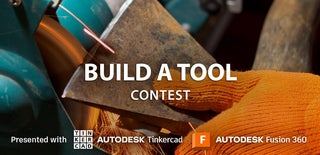Introduction: Temperature Controlled Soldering Iron
I recently made a Temperature controller to control the temperature of a PTC heating Element.
This evolved into a PCB version.
Tim's Hot Plate : 34 Steps (with Pictures) - Instructables
The PCB version starts at Step 27, though I have explained some things about K-Type Thermocouple Sensors in the first part that may be for interest.
This Instructable requires the PCB version of the controller. I had my PCB made by PCBWay
This Instructable is about how I made a Temperature Controlled Soldering Iron, from a basic Soldering Iron.
- Using the PCB Temperature Controller .
I made this Instructable separate because the other Instructable was getting quite long and this uses modified firmware.
Supplies
PCB Version of Tim's Hot Plate : 34 Steps (with Pictures) - Instructables from Step 27 onwards.
An old working basic Soldering Iron.
K-Type Thermocouple Sensor. (I will be using off-Cuts)
Shrink-wrap.
Step 1: K-Type Thermocouple
I have mentioned that the actual wires of the K-Type Thermocouple Sensor are the sensor part.
So I will be using an Off-Cut from the sensor I used on that Instructable.
- The length of the K-Type Thermocouple Sensor wires will only be long enough to span the area of the Soldering Iron that gets hot.
- The rest of the sensor wire connection to the PCB Controller will be normal copper wire.
- When using short lengths of K-Type Thermocouple Sensor wire, make sure that both wires are the same length.
The cable use from the K-Type Thermocouple Sensor wires to the PCB don't need to be heavy copper wires, the lighter the cable is the better, you want something flexible. It's only carrying a few millivolts. I have used the cable from an old pair of ear-bud speakers that no longer worked.
Joining the K-Type Thermocouple Sensor wire to the copper wire needs to be done with crimps.
- Crimps are just small metal tubes, you feed the ends of the wire into the ends and crush the tube with pliers to crimp the wires in place.
- Soldering to the K-Type Thermocouple Sensor wire is difficult to do.
I used Shrink-wrap to cover the joints.
The end of the K-Type Thermocouple Sensor wires that will be attached to the hot end of the soldering iron need twisting together very tightly like I have shown.
- I heat the wires red hot and use two pears of plyers to twist them together.
The length of the twisted part needs to be long enough to wrap around what ever you will be fixing it to.
- My Soldering Iron has a screw holding the heater element in place, so I am going to wrap it around that screw.
- If you don't have such a screw on your Soldering Iron, wrapping it around the hot end should work.
Because the cable I have used has very fine coper wires inside.
- The end that connects to the PCB Temperature controller, I have soldered some pins from mail headers to the end of the wires.
- This makes it easy to fit the cable to the screw connectors.
I just used a piece of tinned copper wire to hold the cable in place on the soldering iron.
- the rest of the cable follows the mains lead of the Soldering Iron to the PCB Temperature controller.
- Use wire ties or insulation tape periodically to keep the two cables together.
Step 2: Temperature Controller
The Soldering Iron, no longer plugs into the mains outlet.
- Remove the mains plug from your Soldering Iron.
- Connect the mains lead of your Soldering Iron to the Hot-Plate terminals of the PCB Temperature Controller.
The cable from the K-Type Thermocouple connects the K-Type screw terminals.
- Be sure that the polarity is correct.
Warning!
- If you power up the PCB Temperature Controller with the case open.
- The wires on the end of the large PSU Capacitor could have over 300 volts across them.
I have changed the Box for the Soldering Iron setup.
- The STL files needed are the same as in Instructable: Tim's Hot Plate : 34 Steps (with Pictures) - Instructables except for the box.
- Here is the link for the box: Box_Iron.stl
Step 3: Code
Here is a zip file: Hot_Plate_Firm.zip
The Zip file has:
- XLoader - A small application for uploading HEX files to Arduino Devices.
- Tims_Hot_Iron_PCB_3_NANO_NBL_168.Hex - Hex code for the Arduino NANO 168 no bootloader.
- Tims_Hot_Iron_PCB_3_NANO_NBL_328P.Hex - Hex code for the Arduino NANO 328P no bootloader.
Once the code is uploaded, it should be good to go.
Updated firmware as of September 2022
Adjustment is the same as Tim's Hot Plate : 34 Steps (with Pictures) - Instructables
- It is best to set it at a lower temperature when first set.
- Let it start to settle.
- Then set it to the required Temperature.
What ever the temperature your Soldering Iron went to before adding the PCB Temperature Controller, will be the maximum temperature you will be able to achieve.
Step 4: Other Uses for the PCB Temperature Controller
It may not be a Soldering Iron you have.
I think anything that has a heating element without a thermostat and runs of the mains can be converted.
- It could be a Hot Wood Pencil.
- Leather Iron or Brander.
- You could even adjust a Glue Gun.

Participated in the
Build a Tool Contest




![Writing Your Hand Written Text With a Plotter [G-Code]](https://content.instructables.com/FTY/0K4F/LW82OIZV/FTY0K4FLW82OIZV.png?auto=webp&crop=1%3A1&frame=1&width=130)
![Tim's Mechanical Spider Leg [LU9685-20CU]](https://content.instructables.com/FFB/5R4I/LVKZ6G6R/FFB5R4ILVKZ6G6R.png?auto=webp&crop=1%3A1&frame=1&width=130)







